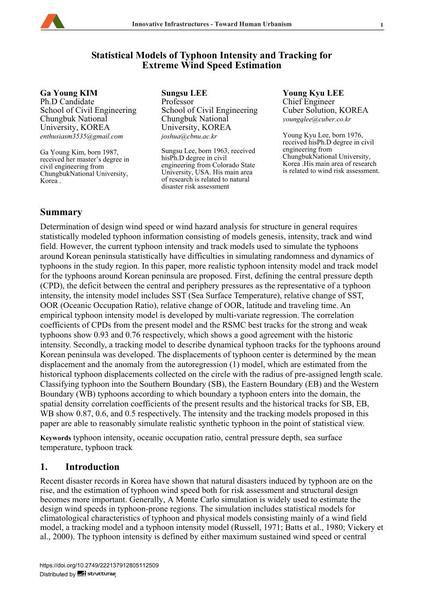|
Abstrait:
|
Determination of design wind speed or wind hazard analysis for structure in general requires statistically modeled typhoon information consisting of models genesis, intensity, track and wind field. However, the current typhoon intensity and track models used to simulate the typhoons around Korean peninsula statistically have difficulties in simulating randomness and dynamics of typhoons in the study region. In this paper, more realistic typhoon intensity model and track model for the typhoons around Korean peninsula are proposed. First, defining the central pressure depth (CPD), the deficit between the central and periphery pressures as the representative of a typhoon intensity, the intensity model includes SST (Sea Surface Temperature), relative change of SST, OOR (Oceanic Occupation Ratio), relative change of OOR, latitude and traveling time. An empirical typhoon intensity model is developed by multi-variate regression. The correlation coefficients of CPDs from the present model and the RSMC best tracks for the strong and weak typhoons show 0.93 and 0.76 respectively, which shows a good agreement with the historic intensity. Secondly, a tracking model to describe dynamical typhoon tracks for the typhoons around Korean peninsula was developed. The displacements of typhoon center is determined by the mean displacement and the anomaly from the autoregression (1) model, which are estimated from the historical typhoon displacements collected on the circle with the radius of pre-assigned length scale. Classifying typhoon into the Southern Boundary (SB), the Eastern Boundary (EB) and the Western Boundary (WB) typhoons according to which boundary a typhoon enters into the domain, the spatial density correlation coefficients of the present results and the historical tracks for SB, EB, WB show 0.87, 0.6, and 0.5 respectively. The intensity and the tracking models proposed in this paper are able to reasonably simulate realistic synthetic typhoon in the point of statistical view.
|

